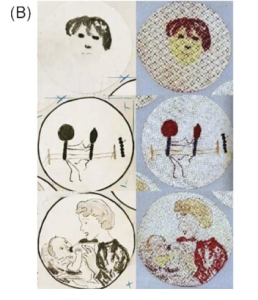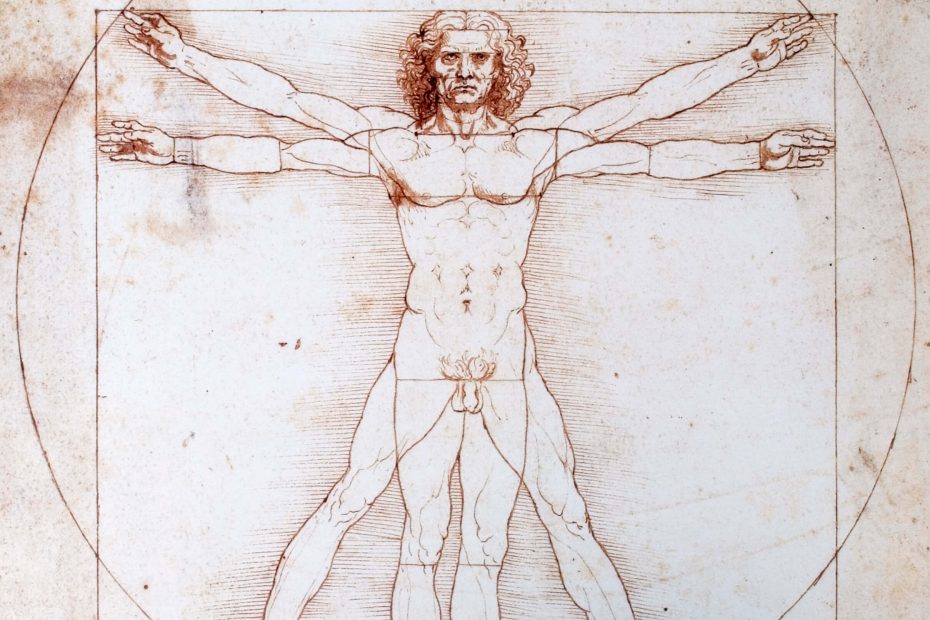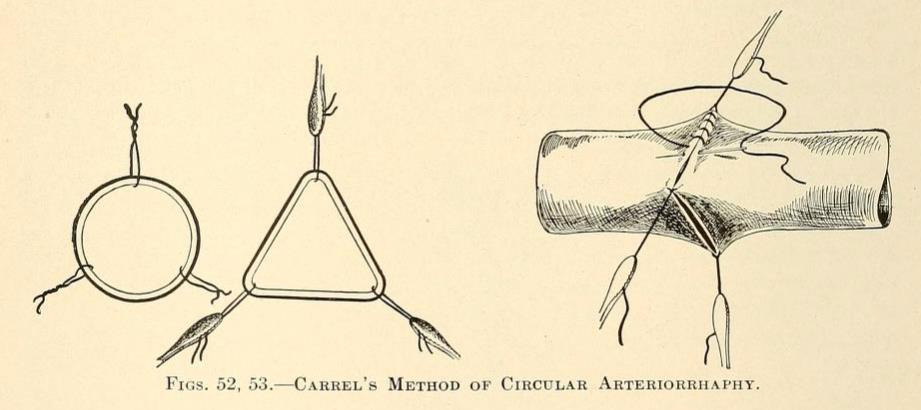Each year, in the first week of October, the world eagerly awaits the Nobel Prize announcements. The prize was established in 1895 by the will of Alfred Nobel, who pledged his entire estate to endow “prizes to those who, during the preceding year, have conferred the greatest benefit to humankind.”1 Unsurprisingly, groundbreaking scientific discoveries often require unconventional approaches. The importance of original thinking in winning a Nobel Prize challenges the misconception that great scientists need to be unidimensional lab dwellers. It also raises a compelling question: Are Nobel laureates innate geniuses, or can scientific creativity be cultivated?
The unexpected link between art and science
People who are both left and right brained are a rare combination, and no one integrated each hemisphere better than Leonardo da Vinci. As much as he was a prolific engineer and inventor, he was also an exquisite painter and sculptor. Unfortunately, the Nobel Prize wasn’t around in the 15th century (or Da Vinci would have cleaned up). There are several polymaths, though, who followed in his footsteps and became Nobel laureates.
The list of Nobel laureates with an affinity for the arts is long. Here are a few names you might recognize:
Richard Feynman
Feynman won the 1965 Nobel Prize in physics for his work on quantum electrodynamics.2 He was not just a brilliant physicist and a gifted teacher, but also an artist, taking up drawing at the age of 44. His sketches, which he eventually sold under a pseudonym, demonstrate the “scientific awe,” as he called it.3 He was also a talented drummer and bongo player who regularly performed in orchestra pits, solving nagging scientific problems through the use of “acoustic images.”4,5

Santiago Ramón y Cajal
A 1906 Nobel laureate in physiology or medicine, Cajal applied his aesthetic eye to untangling the brain’s neuronal structure.6 Despite his artistic aspirations, he complied with his father’s wishes to enroll in medical school. Cajal eventually became fascinated by histology, translating microscopic images of brain tissue into precise freehand drawings.7 From more than 2,900 sketches, 80 of which are showcased in The Beautiful Brain exhibit in the Ackland Art Museum at the University of North Carolina at Chapel Hill, he formulated the once controversial “neuron doctrine” that now underpins all of modern neuroscience.7,8 Commenting on scientists with creative hobbies, Cajal remarked that “... from afar, it appears as though they are scattering and dissipating their energies, while in reality, they are channeling and strengthening them.”9
Albert Einstein
An iconic physicist who hardly needs an introduction, Einstein was awarded the 1921 Nobel Prize in physics for the photoelectric effect.10 He had a profound connection to music, and he rarely went anywhere without his battered violin case. Einstein credited music as the driving force behind his scientific breakthroughs, once declaring that “the theory of relativity occurred to me by intuition, and music is the driving force behind this intuition.”4

Alexander Fleming
The recipient of the 1945 Nobel Prize in physiology or medicine for the discovery of penicillin, Fleming expressed his imagination through watercolor paintings.11 With time, he let his scientific knowledge blend into his artistic pursuits. In an exceptional series of paintings that used microbes as ink, he produced images that evolved over time and were (quite literally) alive. Fleming became involved with “microbial art” in 1914, when he was awarded an exclusive membership to the Chelsea Arts Club as an honorary bacteriologist in exchange for providing members with free medical care.12

Alexis Carrel
Recognized with the 1912 Nobel Prize in physiology or medicine for his work on vascular suturing techniques, Carrel’s ingenuity paved the way for organ transplantation and cardiovascular surgery.13 He is regarded as the “father of anastomoses,” and his childhood interest in embroidery led him to use fine needles and silk thread to develop his famous triangulation method (below).14,15
Building on observations of the “geniuses” mentioned above, a 2008 study delved deeper into the artistic pursuits of Nobel laureates.9,16 The findings were startling. Nobel Prize recipients were nearly three times more likely to engage in creative hobbies than their scientific counterparts. Broken down further, they were:
- 22 times more likely than typical scientists to perform, sing or act in their spare time
- 12 times more likely to write fiction, plays, poetry or short stories
- 5 times more likely to engage in crafting, woodworking, mechanics or glassblowing
- Seven times more likely to enjoy designing, painting, drawing or sculpting
Openness and Curiosity
Why are Nobel Prize winners more likely to have artistic hobbies? It’s because they’re simply more open to having hobbies. As defined in the five-factor model, openness is associated with intellectual curiosity, creativity, aesthetic sensitivity and nondogmatic attitudes.17 Given their openness to novel experiences, these laureates are more likely turn to their hobbies when grappling with a thorny problem, often obtaining new insights in the process.
Beyond Intelligence —Correlative Talents and Creative Synergy
Given the success of the people in this article, should educators require that all science, technology, engineering and math (STEM) students take classes in painting, sculpting, music composition or creative writing? Not exactly. Prior research has demonstrated a more subtle point: Functional interaction must exist between intellectual and aesthetic activities.18 These interrelated pursuits have been referred to as “integrated activity sets,” “networks of enterprise” and “correlative talents.” 19–21 Each concept suggests that ostensibly unrelated activities allow scientists to transfer insights from one field to another, combining their talents into a synergistic whole.
A Wandering Mind —Linear Versus Associative Thinking
These connections challenge the dichotomy of linear, logical thinking in science and no-linear, associative thinking in art. Like artists, scientists often let their minds wander, a practice that has led to some of history’s greatest scientific breakthroughs. Before one of his most fertile periods of work, Einstein "“spent a year loafing aimlessly,” fellow physicist Carlo Rovelli wrote in his book Seven Brief Lessons on Physics, allowing his mind to drift along with his boat.5 Similarly, Charles Darwin’s five-year, meandering voyage on the HMS Beagle afforded him the physical and mental space to formulate his theories of natural selection. Artistic hobbies give scientists time to relax and to ponder solutions to problems. And in many cases, these exceptional minds are not merely finding answers to existing problems but recognizing new ones that need solving.
Studying the Art of Science
For the average scientist, the message is clear: Creativity is cultivated through a combination of skill acquisition and a diverse set of interests. The Nobel laureates in this article discovered that their artistic exploration was not merely an escape from their academic pursuits but a stimulant for developing ideas that might not have emerged otherwise. A creative and complete mind needs stimulation both inside and outside the lab.
So, although your PI might need some convincing, you should occasionally trade your pipet for a paintbrush. Or instead, choose music over the microscope. If you don’t trust my advice, then take Da Vinci’s: “To develop a complete mind, study the science of art and the art of science. Learn how to see. Realize that everything connects to everything else.”3
References
- Alfred Nobel’s will. NobelPrize.org. Accessed Dec. 2, 2023. nobelprize.org/alfred-nobel/alfred-nobels-will/
- The Nobel Prize in Physics 1965. NobelPrize.org. Accessed Dec. 2, 2023. nobelprize.org/prizes/physics/1965/feynman/facts/
- Grochowska A. The Art and Science of Ten Nobel Prize Laureates. Vadviam. Published May 14, 2022. Accessed Dec. 2, 2023. vadviam.com/insights/the-art-and-science-of-ten-nobel-prize-laureates/
- Smith C. The Surprising Creative Hobbies of Superstar Scholars — and What You Can Learn. Prolifiko. Published April 24, 2018. Accessed Dec. 2, 2023. prolifiko.com/surprsing-creative-hobbies-of-superstar-scholar/
- Einstein Played the Violin, Turing Ran Marathons: What the Hobbies of Geniuses Tell Us About the Relationship Between Leisure and Great Ideas. Inc.com. Accessed Dec. 2, 2023. inc.com/jessica-stillman/what-hobbies-of-geniuses-tell-us-about-relationship-between-leisure-great-ideas.html
- The Nobel Prize in Physiology or Medicine 1906. NobelPrize.org. Accessed Dec. 2, 2023. nobelprize.org/prizes/medicine/1906/cajal/biographical/
- Santiago Ramón y Cajal, the Young Artist Who Grew Up to Invent Neuroscience. Scientific American. Accessed Dec. 2, 2023. blogs.scientificamerican.com/illusion-chasers/santiago-ramon-y-cajal-the-young-artist-who-grew-up-to-invent-neuroscience/
- The Beautiful Brain: The Drawings of Santiago Ramón y Cajal. Grey Art Gallery. Accessed Dec. 2, 2023. greyartgallery.nyu.edu/exhibition/beautiful-brainthe-drawings-santiago-ramon-y-cajal/
- Root-Bernstein R, Allen L, Beach L, et al. Arts Foster Scientific Success: Avocations of Nobel, National Academy, Royal Society, and Sigma Xi Members. Journal of Psychology of Science and Technology. 2008; 1(2):51-63. doi:10.1891/1939-7054.1.2.51
- Albert Einstein — The Nobel Prize in Physics 1921. NobelPrize.org. Accessed Dec. 2, 2023. nobelprize.org/prizes/physics/1921/einstein/facts/
- Sir Alexander Fleming —The Nobel Prize in Physiology or Medicine 1945. NobelPrize.org. Accessed Dec. 2, 2023. nobelprize.org/prizes/medicine/1945/fleming/facts/
- Frankel E, Temple J, Dikener E, Berkmen M. Bridging the Gap with Bacterial Art. Federation of European Microbiological Societies Letters. 2023; 370:fnad025. doi:10.1093/femsle/fnad025
- The Nobel Prize in Physiology or Medicine 1912. NobelPrize.org. Accessed Dec. 2, 2023. nobelprize.org/prizes/medicine/1912/carrel/biographical/
- Savlania A, Alexis Carrel: Father of Vascular Anastomosisand Organ Transplantation. Indian Journal of Vascular and Endovascular Surgery. 2017; 4:115. doi:10.4103/ijves.ijves_30_17
- Nobel Prizes Most Often Go to Researchers Who Defy Specialization – Winners Are Creative Thinkers Who Synthesize Innovations from Varied Fields and Even Hobbies. Accessed Dec. 2, 2023. theconversation.com/nobel-prizes-most-often-go-to-researchers-who-defy-specialization-winners-are-creative-thinkers-who-synthesize-innovations-from-varied-fields-and-even-hobbies-186193
- White RK. The Versatility of Genius. The Journal of Social Psychology. 1931; 2:460-489. doi:10.1080/00224545.1931.9918987
- Five-Factor Model of Personality. SpringerLink. Accessed Dec. 2, 2023. link.springer.com/referenceworkentry/10.1007/978-1-4419-1005-9_1226
- Root-Bernstein R, Root-Bernstein M. Artistic Scientists and Scientific Artists: The Link Between Polymathy and Creativity. In: Sternberg RJ, Grigorenko EL, Singer JL, eds. Creativity: From Potential to Realization. American Psychological Association. 2004:127-151. doi:10.1037/10692-008
- Dewey J. Art As Experience. Minton, Balch; 1934:362
- Gruber HE. Networks of Enterprise in Creative Scientific Work. In: Gholson B, ed. Psychology of Science: Contributions to Metascience. Cambridge University Press; 1989:246-274
- Root-Bernstein RS. Discovering. Replica Books; 1989
Related Content
- Nobel Prize Winning Research May Lead to New Therapies for Cancer, Alzheimer’s
- An Evening with Nobel Laureate Gregg Semenza
- From Fiction to Function: How Biomedical Innovation Thrives on Imagination
Want to read more from the Johns Hopkins School of Medicine? Subscribe to the Biomedical Odyssey blog and receive new posts directly in your inbox.


